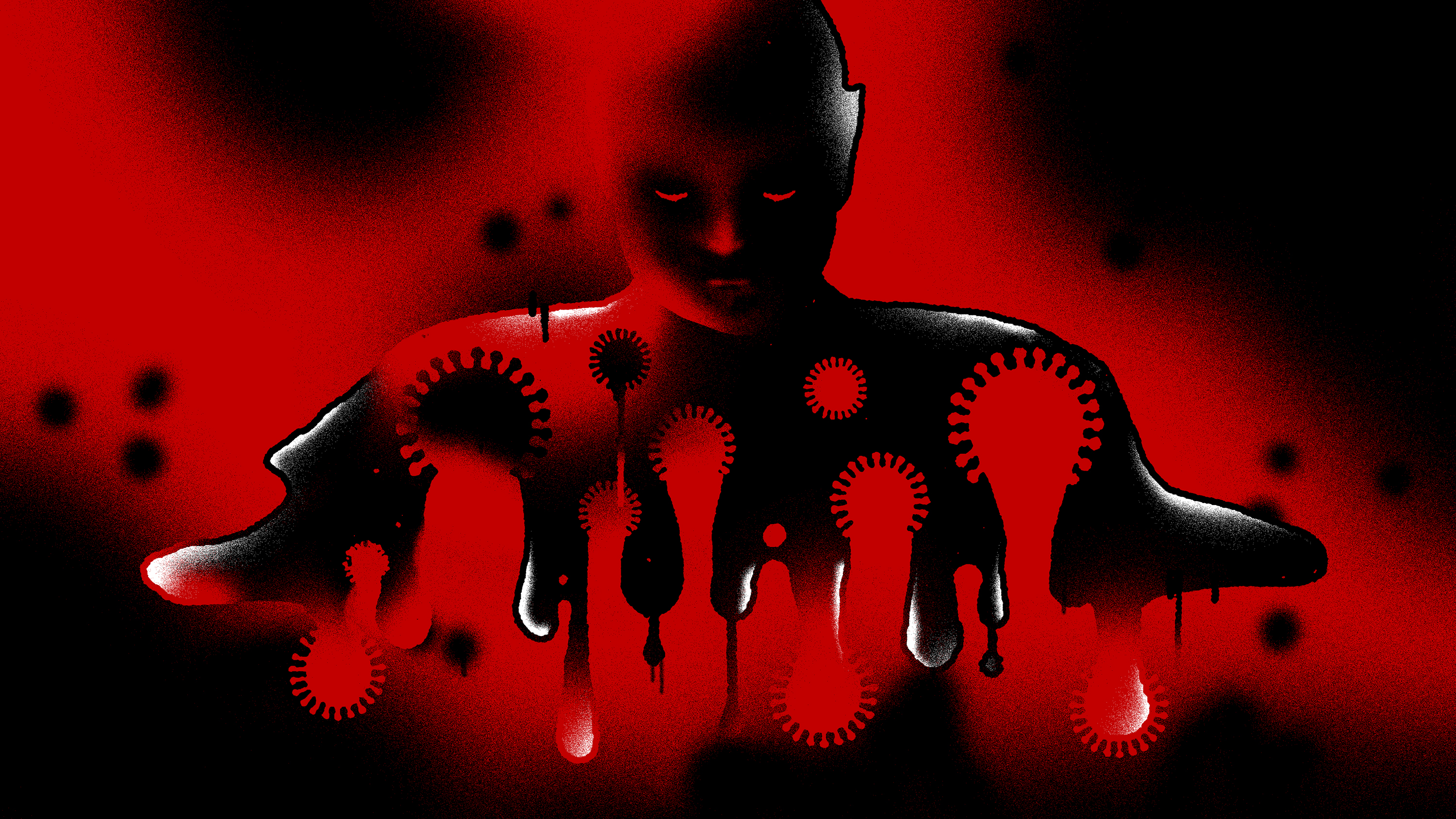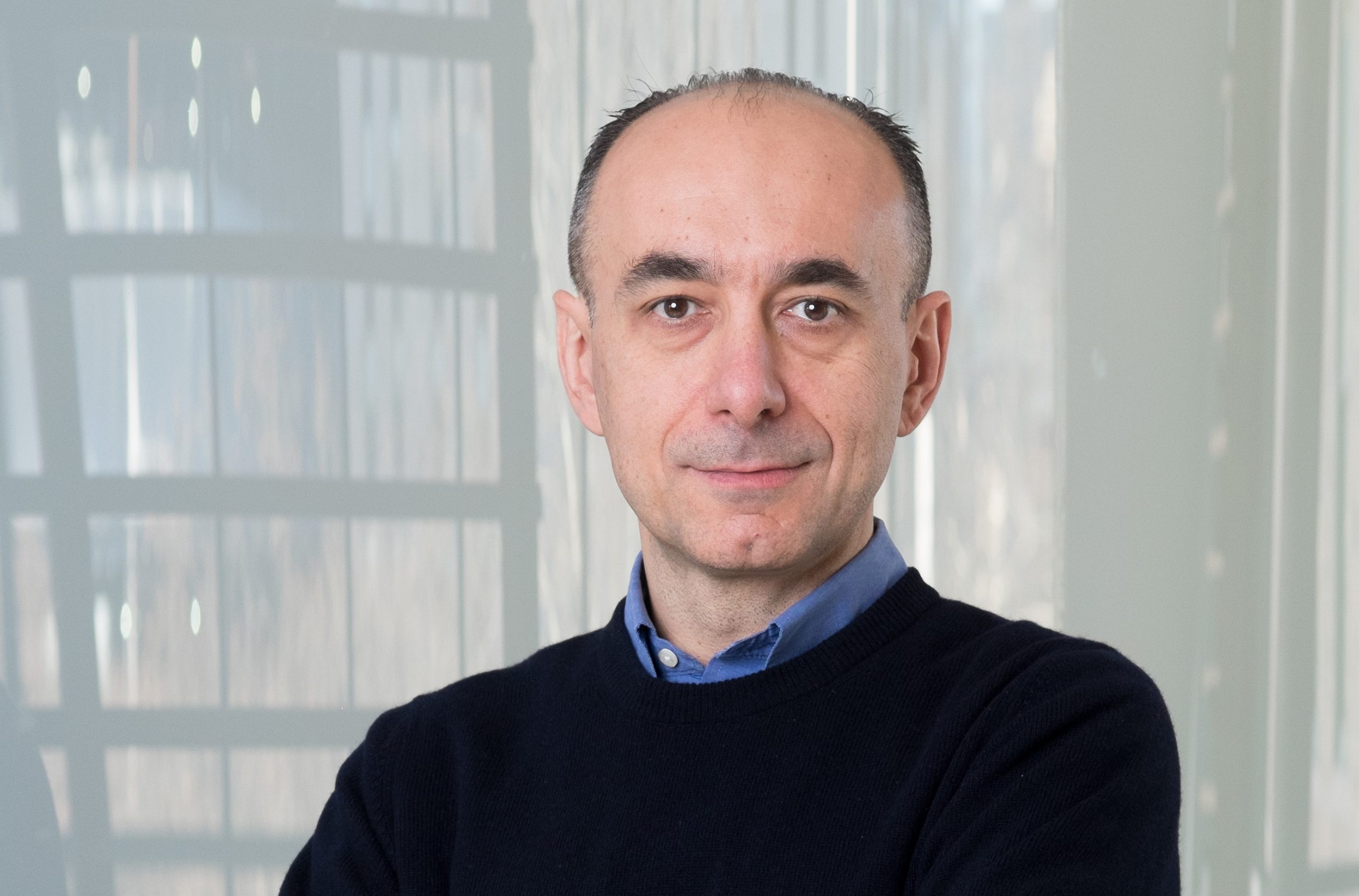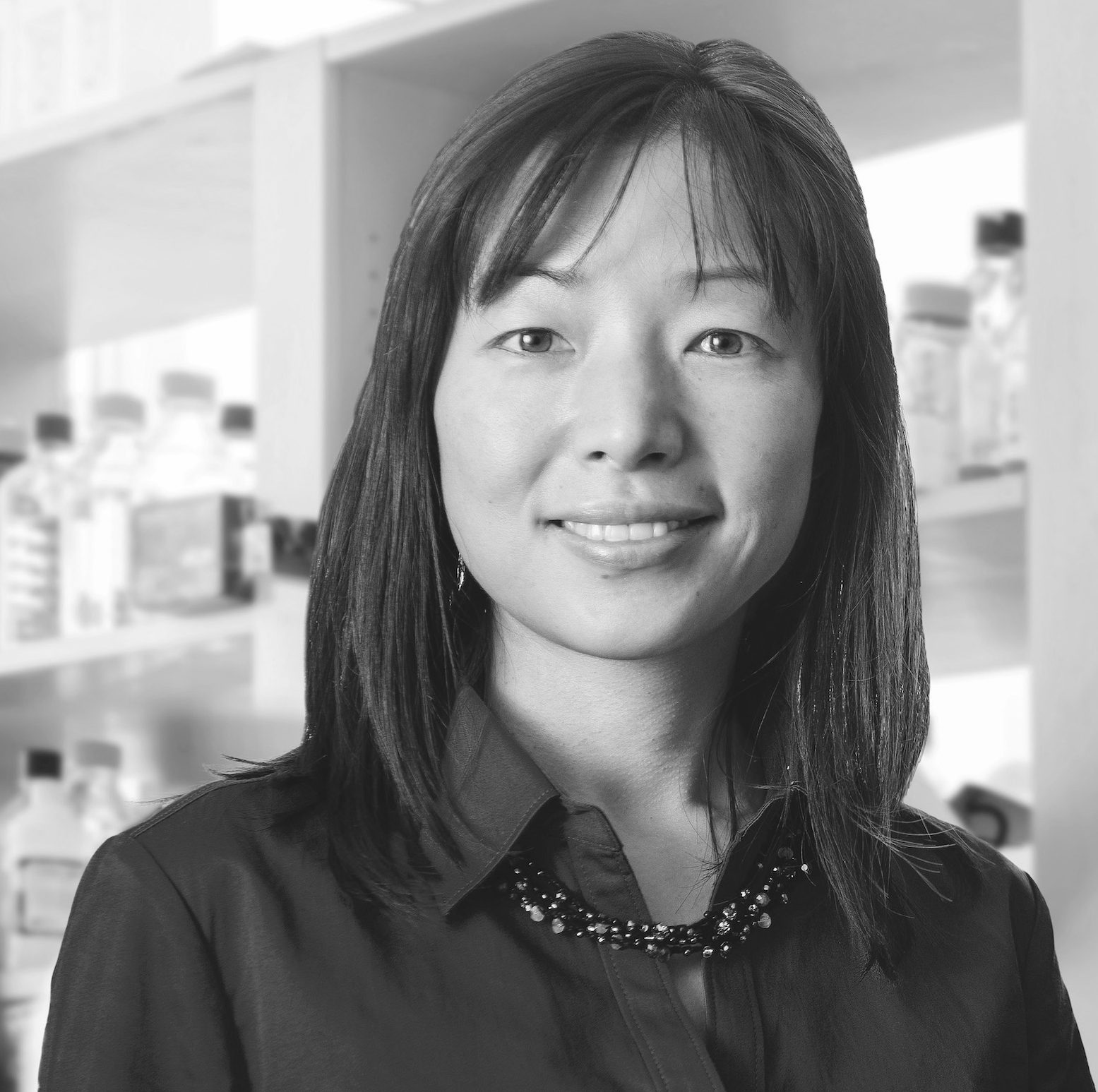Could covid lead to a lifetime of autoimmune disease?
Evidence is growing that in some people covid infections are producing autoantibodies targeting the body’s organs. If true, it could mean years of lingering sickness and misery for many.

When Aaron Ring began testing blood samples collected from covid-19 patients who had come through Yale–New Haven Hospital last March and April, he expected to see a type of immune protein known as an autoantibody in at least some of them. These are antibodies that have gone rogue and started attacking the body’s own tissue; they’re known to show up after some severe infections.
Researchers at New York City’s Rockefeller University had already found that some patients with bad cases of covid had copies of these potentially dangerous immune proteins, circulating in the bloodstream. These preexisting autoantibodies, likely created by previous infections, were still lurking around and appeared to be mistakenly attacking other immune proteins. It helped explain why some people were getting so sick from covid-19.
Still, what Ring, a shaggy-haired cancer immunologist at Yale University, detected in his blood samples last fall so spooked him that he pulled his nine-month-old daughter out of day care and put his family back on lockdown.
The Rockefeller researchers had identified a single type of antibody primed to attack immune cells. But Ring, using a novel detection method he had invented, found a vast array of autoantibodies ready to attack scores of other human proteins, including ones found in the body’s vital organs and bloodstream. The levels, variety, and ubiquity of the autoantibodies he found in some patients shocked him; it looked like what doctors might see in people with chronic autoimmune diseases that often lead to a lifetime of pain and damage to organs including the brain.

“What rocked my world was seeing covid patients with levels of autoreactivity commensurate with an autoimmune disease like lupus,” he says.
Ring’s autoantibody tests showed that in some patients—even some with mild cases of covid—the rogue immune proteins were marking blood cells for attack. Others were on the hunt for proteins associated with the heart and liver. Some patients appeared to have autoantibodies primed to attack the central nervous system and the brain. This was far more ominous than anything identified by the Rockefeller scientists. Ring’s findings seemed to suggest a potentially systemic problem; these patients seemed to be cranking out multiple varieties of new autoantibodies in response to covid, until the body appeared to be at war with itself.
What scared Ring the most was that autoantibodies have the potential to last a lifetime. This raised a series of chilling questions: What are the long-term consequences for these patients if these powerful assassins outlive the infection? How much destruction could they cause? And for how long?
What Ring detected in his blood samples last fall so spooked him that he pulled his nine-month-old daughter out of day care and put his family back on lockdown.
Even as hope is building that vaccines will provide a way to halt covid’s relentless spread, another public health crisis is looming: the mysterious and persistent chronic condition afflicting some survivors, often referred to as “long covid.” Roughly 10% of covid survivors, many of whom had only mild initial symptoms, can’t seem to kick it.
These long-haulers often suffer from extreme fatigue, shortness of breath, “brain fog,” sleep disorders, fevers, gastrointestinal symptoms, anxiety, depression, and a wide array of other symptoms. Policymakers, doctors, and scientists around the globe warn that countless millions of otherwise healthy young adults could face decades of debilitating issues.
The causes of long-haul covid are still mysterious. But autoimmunity now tops the list of possibilities. And Ring believes that among the likeliest culprits, at least in some patients, are the armies of runaway autoantibodies.
A system gone haywire
It did not take long for doctors on the front lines of the covid pandemic to recognize that the biggest threat to many of their patients was not the virus itself, but the body’s response to it.
In Wuhan, China, some clinicians noted that the blood of many of their sickest patients was flooded with immune proteins known as cytokines, a cellular SOS signal capable of triggering cell death or a phenomenon known as a cytokine storm, where elements of the body start attacking its own tissue. Cytokine storms were thought to represent a kind of risky, doomsday immune response—akin to calling in an air strike on your own position while badly outnumbered in the middle of a firefight.
Though this was something doctors had seen in other conditions, it quickly became apparent that the cytokine storms produced by covid-19 had unusual destructive power.
Early on in the pandemic, Jean-Laurent Casanova, an immunologist and geneticist at Rockefeller University, decided to take a closer look. In 2015, Casanova had demonstrated that many people who contracted severe cases of influenza carried genetic mutations blocking their ability to produce an important signaling protein, called interferon-1 (IGF-1), that enables patients to mount an effective early immune response. Interferon got its name, Casanova says, because it “interferes” with viral replication by informing neighboring cells “that there’s a virus around, and that they should close the windows and lock the door.”

When Casanova looked at patients with severe covid, he found that indeed, a small but significant number of those suffering from critical pneumonia also carried these inborn errors—genetic typos that prevented them from producing interferon. But he also found something else intriguing: an additional 10% of covid patients with pneumonia were suffering from interferon deficiencies because the signaling agent was being attacked and neutralized by autoantibodies.
These autoantibodies, he concluded, had likely been circulating in the patients’ bloodstream before they contracted covid. However, in response to the covid infection, these lingering autoantibodies had replicated in massive numbers and attacked the crucial early warning signal before it could sound the alarm. By the time the immune system finally kicked into gear, it was so far behind the 8-ball that it resorted to its last-ditch option: a dangerous cytokine storm.
“The autoantibodies already exist—their creation is not triggered by the virus,” Casanova explains. But once a person is infected, they seem to multiply in large numbers, causing catastrophic pulmonary and systemic inflammation.
Casanova’s findings, published in September in Science, suggested that many critical covid patients could be saved with widely available existing drugs—types of synthetic interferon that could evade the autoantibodies and kick the immune system into gear early enough to avoid a cytokine storm.
But the results also hinted at something that fed Ring’s anxiety: the ability of the autoantibodies, once created and allowed to circulate, to stick around and pose an ongoing threat. There was something else that worried Ring too. While Casanova attributed the rogue antibodies to the legacy of a previous infection, Ring’s data suggested that new ones can somehow be created by covid itself.
Ring quickly confirmed Casanova’s results in some of his own patients. But that was just the start, since his own detection technique, created as a tool in cancer immunology, could test for the presence of antibodies directed against any of 2,688 human proteins.
Ring found antibodies targeting 30 other important signaling agents besides interferon, some of which play an essential role in directing where immune cells needed to attack. There were also antibodies against a number of organ- and tissue-specific proteins—some of which seemed to account for certain symptoms of covid. Ominously, unlike Casanova’s autoantibodies, many of Ring’s appeared to be brand new.
On his computer, Ring can pull up several graphs displaying the population of 15 different autoantibodies found in several patients as their infection progressed. Just as Casanova described, antibodies against interferon are clearly visible in the blood when patients were first tested at the hospital. Those numbers stay high as the infection progresses. But Ring found the trajectory to be quite different for the other autoantibodies.
In the initial samples, autoantibodies except for the ones against interferon are nonexistent or undetectable in the blood. Those other antibodies first appear in subsequent blood samples and continue to rise as the infection persists. It seemed to confirm Ring’s worst fears: that those autoantibodies were created by covid itself.
“These are very clearly newly acquired—no question about it,” he explains, pointing to one line of rising autoantibodies. “They came up during the course of infection. The infection triggered autoimmunity.”
In most of those patients, the autoantibodies returned to undetectable levels in subsequent blood samples. But in some, the autoantibodies remained high at the point of last testing—in some cases more than two months after infection. Some of those patients developed long covid.
“We have been, publicly and in the paper, pretty cautious about the interpretation of our results,” he says. “But this does have implications for post-covid syndrome, because autoantibodies can plausibly persist well after the virus has been dealt with.”
An all-out attack
Why do these new autoantibodies appear? Some enticing clues have emerged. In October, a team of researchers led by Ignacio Sanz, an expert on lupus at Emory University, documented a phenomenon in the immune system of many severe covid patients that is often seen during lupus flare-ups.
It occurs in the specialized immune cells known as B cells, which produce antibodies. In order to quickly scale up production of the B cells needed to combat the covid virus, Sanz explains, the immune systems of some patients seem to take a dangerous shortcut in the biological process that usually determines which antibodies the body generates to fight off a specific infection.
Normally when an invading virus triggers an immune response, B cells form into self-contained structures in the follicles of the lymph nodes, where they multiply rapidly, mutate, and swell into an immune army of billions, each one bearing a copy of its signature antibody protein on its surface. Almost as soon as this happens, however, the cells launch into a deadly game of molecular-level musical chairs, competing to bind with a small number of viral fragments to see which one is best suited to attack it. The losing cells immediately begin to die off by the millions. In the end, only the B cells with the antibody that forms the strongest bond to the invading virus survive to be released into the bloodstream.
It’s a good thing the rest don’t, Sanz explains, because as many as 30% of the antibodies produced in the race to fight off an invading virus will target parts of the body the system is designed to protect.
When Sanz looked at the blood of patients with severe covid, he found that many did quickly create antibodies to fight the virus. But most of these antibodies were produced by rapidly multiplying B cells generated outside the normal weeding-out process. Sanz had seen this phenomenon before in lupus, and many believed it to be a hallmark of immune dysfunction.
Eline Luning Prak, a professor at the Hospital of the University of Pennsylvania, says she is not surprised. Luning Prak, an expert on autoimmune diseases, notes that when the body is in crisis, the usual controls may be relaxed. “This is what I call an all-hands-on-deck-style immune response,” she says. “When you’re dying from an overwhelming viral infection, the immune system at this point says, ‘I don’t care—just give me anything.’”
Still a mystery
In March, James Heath, president of the Institute for Systems Biology in Seattle, worked with a long list of eminent immunologists to publish what he believes to be the first scientific paper characterizing the immune system of patients two to three months after becoming infected. Heath and his colleagues found that people who survived took one of four different pathways. Two groups of patients experienced full recoveries—one group from severe acute covid, and a second from the disease’s milder form. And two other groups—some of whom had severe acute covid and some of whose initial symptoms were mild—continued to experience massive immune activation.
The vast majority of patients Heath studied have yet to make a full recovery. Only a third, he says, “are feeling and looking, from immunology metrics, like they’re recovered.”
But what exactly is causing this continued immune reaction—whether it’s autoimmune disease and autoantibodies or something else—is “the million-dollar question.” To Heath, the persistent presence of self-attacking antibodies, like those found by Ring and others, seems like a leading hypothesis. He believes, though, that the chronic symptoms could also be caused by undetectable remnants of the virus that keep the immune system in a state of low-level activation.
In the end, Heath thinks that what we call long covid may well turn out to be more than one disorder caused by the initial infection. “For sure, your immune system is activating against something,” he says. “And whether it’s activating itself or not, which is the difference between autoimmune and something else, is an open question. It’s probably different in different people.”
Luning Prak agrees that the cause of long covid may well be different in different patients.
“What could be causing long covid? Well, one possibility is you have viral injury and you have residual damage from that,” she says. “Another possibility is that you have autoimmunity.” She adds, “A third possibility is some type of chronic infection; they just don’t completely clear the virus and it allows the virus to kind of chronically set up shop somehow. That’s a really scary and creepy idea for which we have very little evidence.” And, she says, all three might turn out to be true.
Why risk it?
Though the culprit (or culprits) behind long covid remains a mystery, the work being done by Ring, Heath, Luning Prak, and others may soon give us a far better idea of what is happening. Ring notes, for example, that a growing number of reports from long-haulers suggest that in some cases, the vaccine seems to be curing them.

Ring’s colleague Akiko Iwasaki, a Yale immunologist and a coauthor on his autoantibody paper, speculates that if long covid is caused by the presence of viral remnants, the vaccine might help clear them out by inducing more viral-specific antibodies. And if the cause is autoantibodies, she says, the specificity of the vaccine—which is engineered to train the immune system to target the covid virus —might be mobilizing a response with such urgency and force that other aspects of the system are stepping in to inhibit the autoantibodies.
All this remains scientific speculation. But Ring hopes he and his collaborators will soon get some answers. They are in the process of collecting blood samples from long covid patients from clinics around the country, looking for telltale signs of autoantibodies and other indications of immune dysfunction.
In the meantime, Ring isn’t taking any chances with his daughter.
“The fact that we had seen autoantibodies come up in so many covid patients really made me think, ‘Yeah, we’re not going to roll the dice with baby Sara,’” he says. “So, I mean, we put our money where our mouths are. Like I said, we are still paying for a day-care slot that we don’t use because we just don’t want to risk it. I mean, I don’t want to seem like Chicken Little here. But having seen the cases where things go badly, I’m just like, ‘Yeah, no, we want zero chance of that.’”
Deep Dive
Biotechnology and health
How scientists traced a mysterious covid case back to six toilets
When wastewater surveillance turns into a hunt for a single infected individual, the ethics get tricky.
An AI-driven “factory of drugs” claims to have hit a big milestone
Insilico is part of a wave of companies betting on AI as the "next amazing revolution" in biology
The quest to legitimize longevity medicine
Longevity clinics offer a mix of services that largely cater to the wealthy. Now there’s a push to establish their work as a credible medical field.
There is a new most expensive drug in the world. Price tag: $4.25 million
But will the latest gene therapy suffer the curse of the costliest drug?
Stay connected
Get the latest updates from
MIT Technology Review
Discover special offers, top stories, upcoming events, and more.